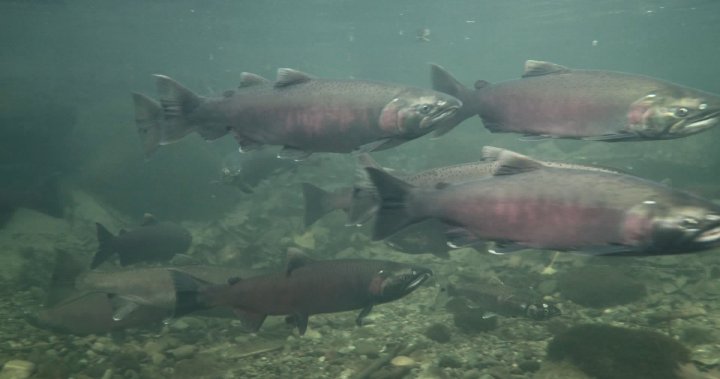
New calls to protect salmon, wildlife as B.C. rebuilds flood defences
Global News
Dikes and pump stations, the core elements of modern flood defences, can come at a massive cost to the welfare of aquatic species.
As British Columbia prepares to build back from recent devastating floods and improve defences against ones in the future, it’s facing new calls to consider the infrastructure’s effects on fish and wildlife.
Dikes and pump stations, the core elements of modern flood defences, can come at a massive cost to the welfare of aquatic species, according to Lina Azeez with the Watershed Watch Salmon Society.
Standard pumps, like the one used at the Maple Creek Pump Station in Port Coquitlam, kill fish every time they’re used, she said.
“It’s pulling fish, it’s pulling amphibians and gridding them up in the machinery of the pumps,” she said.
Dikes, too, provide safety to communities but come with a tradeoff for fish, she said. The society estimates flood control measures, including more than 600 kilometres of dike, have affected about 1,500 kilometres of waterways in the Lower Fraser region that forms a critical habitat for beleaguered salmon populations.
“These are waterways the salmon would have used for a variety of different reasons from spawning, to rearing to overwintering,” she said.
“These waterways are salmon nursery habitats. We need to give salmon the best chance of survival out in the ocean. They need to know how to be good hunters, they need to be big enough.”
Martin Rosenau, an instructor at BCIT’s Fish, Wildlife and Recreation program, said dikes and flood control infrastructure are responsible for up to 95 per cent of the lost wetlands in the Lower Fraser, with historically catastrophic effects for salmon.











